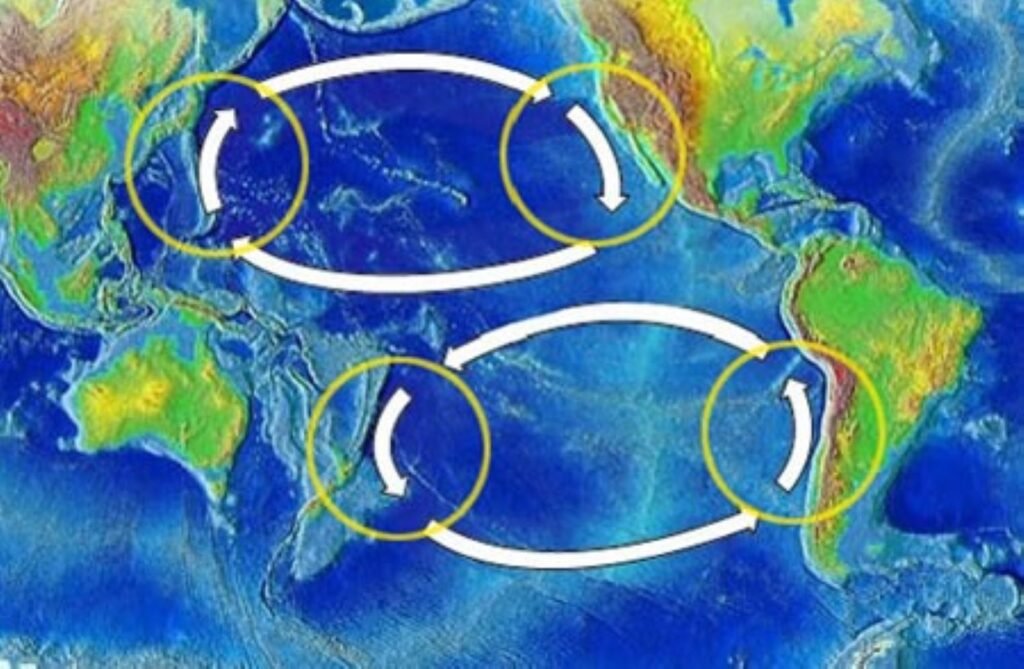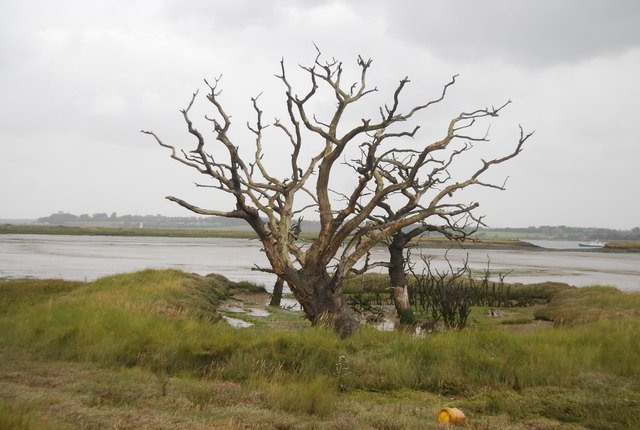The ocean operates like a massive conveyor belt, constantly circulating heat and moisture around the globe to regulate our planet’s climate. These powerful currents have kept temperatures stable across different regions for thousands of years. Yet scientists are now observing dramatic changes in ocean circulation patterns that could fundamentally alter weather systems across the United States.
Recent research suggests we might be witnessing the early stages of a climatic transformation more significant than anything seen in recorded history.
The Atlantic’s Great Conveyor Is Breaking Down

The Atlantic Meridional Overturning Circulation has been weakening and new predictions suggest it could totally switch off between 2025 and 2095. This system, known as the Atlantic Meridional Overturning Circulation (AMOC) had previously been measured to be dramatically weakening in conjunction with rising ocean temperatures. Think of it as the ocean’s heartbeat suddenly becoming irregular.
The Gulf Stream is powered by what’s known as the Atlantic Meridional Overturning Current (AMOC), one of the world’s largest ocean circulation systems. Acting like a cyclical conveyor belt, the AMOC collects hot water from smaller currents in the tropics – which can fuel hurricanes – and moves it north where it can warm polar waters and then south again. When this system falters, the ripple effects reach every corner of America.
Climate Change Is Poisoning the Ocean Engine

Climate change has shifted the balance. Higher temperatures make ocean waters warmer and lighter. An influx of freshwater from melting ice sheets and glaciers dilutes North Atlantic’s saltiness, reducing its density. If these waters aren’t heavy enough to sink, the entire Gulf Stream will shut down.
Scientists have warned the AMOC system is weakening and growing more unstable. This is because climate change is speeding the melting of Arctic ice, creating huge freshwater pulses from Greenland, and spawning heavier rain events. It all combines to make northern water fresher and less salty. That means the water isn’t as dense, so it isn’t sinking, and the current is slowing.
The East Coast Faces a Double Threat

Sea level is rising off the northeastern and mid-Atlantic states, and part of it is driven by the weakening of the Gulf Stream. Studies suggest the Gulf Stream weakening could contribute several centimeters to over a meter of sea level rise along the U.S. East Coast. Still, 10 centimeters can be significant. That’s a few inches, so it’ll make the coastal flood impact of hurricanes greater.
A new study published today in Nature Climate Change now documents that over the past 20 years, the Gulf Stream has warmed faster than the global ocean as a whole and has shifted towards the coast. The team also found the Gulf Stream to be shifting closer to the shore by about 5 kilometers (3.1 miles) per decade on average. Cities from Boston to Miami could face increasingly severe flooding as warm water literally moves closer to their doorsteps.
Northern Winters Could Turn Brutal

The weakening of the Gulf Stream might be tied to less heat reaching Northwest Europe, and more severe winter weather in that region. This is mainly because of a slowing down of the part of the Gulf Stream feeding into the Atlantic Meridional Overturning Circulation (AMOC). The same principle applies to the northeastern United States, which depends on Gulf Stream warmth during winter months.
Some parts of Europe might see significant temperature drops if AMOC collapses, the study finds, leading to a completely different climate over the course of just a decade or two. “No realistic adaptation measures can deal with such rapid temperature changes,” the study authors write. Similar dramatic cooling could transform the American Northeast into something resembling northern Canada.
Pacific Currents Are Creating Chaos on the West Coast

An oceanographer named Shang-Ping Xie, who’s a colleague of Talley’s at the Scripps Institution, has used predictive models to show that in a warming climate, many of the ocean’s surface currents are expected to significantly accelerate by the end of the century. The Pacific isn’t immune to these changes either.
Research shows complex changes to the Gulf Stream system, which brings warmer water northward from the equator and into the Gulf of Maine. The cold Labrador Current is also weakening, so it no longer acts as a strong buffer to the incoming warmer waters. Now, as the impacts of climate change become more visible, we are seeing the Gulf Stream strengthen, which is bringing warmer waters to the region. These dramatic shifts are already transforming marine ecosystems from Alaska to California.
Weather Patterns Will Flip Like a Switch

The changing ocean conditions disrupt weather patterns and marine fisheries along the west coasts of the Americas. Dry regions of Peru, Chile, Mexico, and the southwestern United States are often deluged with rain and snow, and barren deserts have been known to explode in flowers. Meanwhile, wetter regions of the Brazilian Amazon and the northeastern United States often plunge into months-long droughts.
El Niño causes a regional rise in sea levels and thus higher-than-normal spring (full or new moon) tides along the U.S. Pacific and Atlantic coastlines. The atmospheric pressure patterns caused by El Niño, often called “teleconnection patterns,” impact sea levels on both coasts in different ways. This tends to bring more water vapor and storms than normal along the California and Mid-Atlantic coastlines. Traditional seasonal patterns could become completely unreliable.
Agricultural Zones May Shift Dramatically

If such a collapse were to occur, it would very likely cause abrupt shifts in regional weather patterns and the water cycle, including a southward shift in the tropical rain belt, weakening of the African and Asian monsoons, strengthening of Southern Hemisphere monsoons, and drying in Europe. Depending on how much the AMOC weakens, it can change regional weather patterns, such as rainfall, and affect where and how well crops can grow.
We’re going to see wet areas get wetter, and dry areas get drier. The deserts are going to expand toward the poles in both hemispheres. America’s breadbasket could gradually shift northward as traditional farming regions become too dry or too hot for current crops.
The Tipping Point Is Closer Than We Think

One controversial 2023 study predicted that the AMOC could stop between 2025 and 2095, though this prediction has been disputed by other climate scientists, with the tipping point likely in 2057. “It’s really scary,” Peter Ditlevsen tells CNN. “This is not something you would lightly put into papers. … We’re very confident that this is a robust result.”
Forty-four of the world’s leading climate scientists have called on Nordic policymakers to address the potentially imminent and “devastating” collapse of key Atlantic Ocean currents. “Such an ocean circulation change would have devastating and irreversible impacts especially for Nordic countries, but also for other parts of the world,” the scientists wrote in the letter. The warning signs are flashing red, yet most Americans remain unaware of what’s coming.
Conclusion

The ocean currents that have shaped American weather for millennia are undergoing unprecedented changes. From rising seas swallowing East Coast cities to brutal winters freezing the Northeast, from Pacific storms hammering California to droughts transforming the Great Plains, the United States faces a climate reality unlike anything in human history.
These aren’t distant possibilities. They’re unfolding right now beneath the waves. What will your region look like when the ocean’s great conveyor belt finally breaks down?

Hi, I’m Andrew, and I come from India. Experienced content specialist with a passion for writing. My forte includes health and wellness, Travel, Animals, and Nature. A nature nomad, I am obsessed with mountains and love high-altitude trekking. I have been on several Himalayan treks in India including the Everest Base Camp in Nepal, a profound experience.




